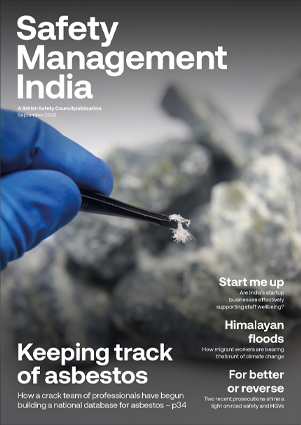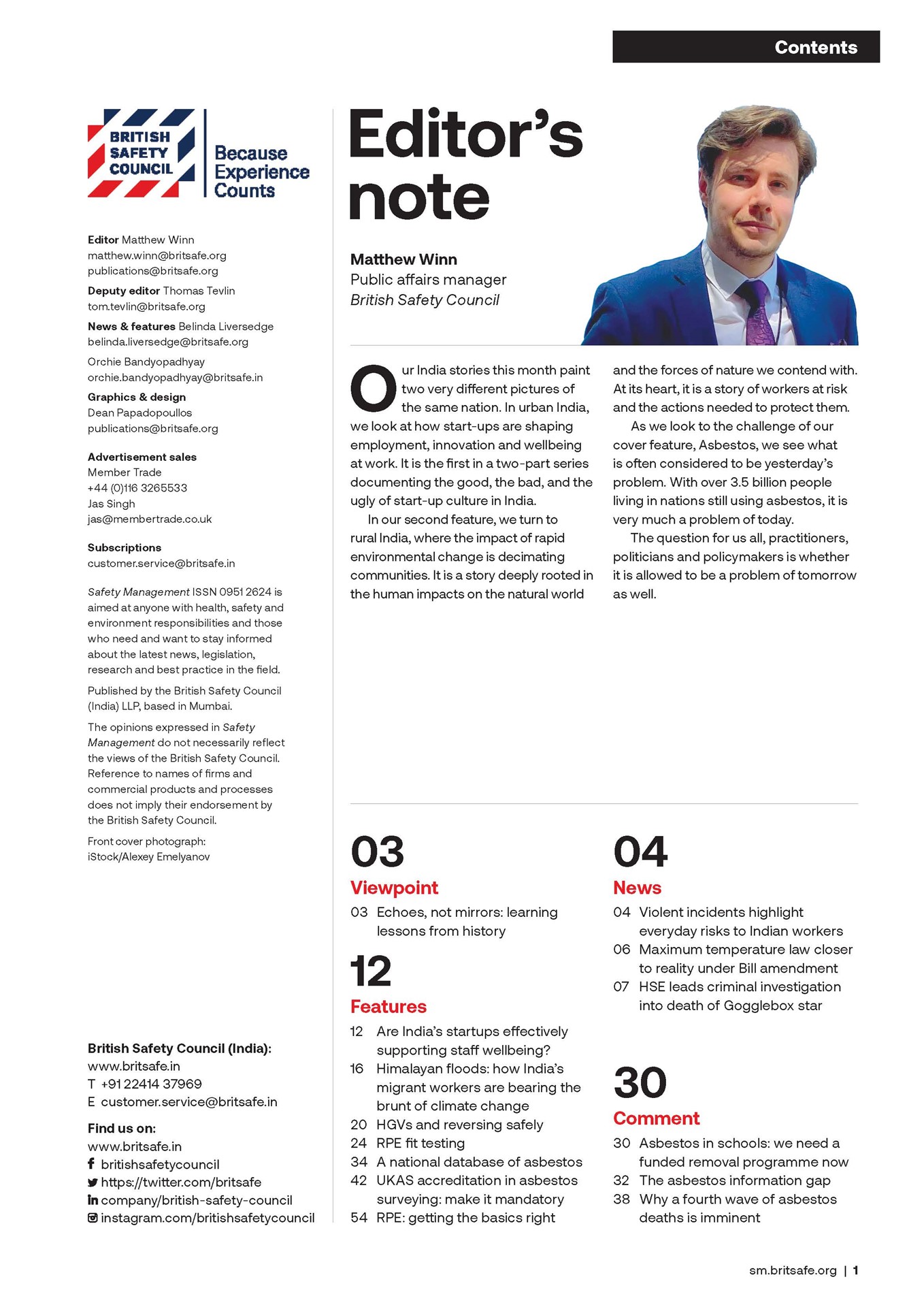Safety footwear can prevent slip, trip and fall injuries, but it’s essential to consider other factors that could positively or negatively affect wearer comfort, such as breathable materials, waterproof qualities and boot weight.
Features
A step head: how the right safety footwear reduces workplace slips, trips and falls
Slips, trips and falls remains the most common cause of workplace injuries in the UK, accounting for 31 per cent of all non-fatal workplace injuries reported by employers under the RIDDOR incident reporting regime in 2023/24. According to the latest Health and Safety Executive (HSE) statistics, slips, trips and falls on the same level accounted for almost 18,500 reported cases during the 2023/24 period.
The role of footwear in preventing accidents
Despite the prevalence of slips, trips and falls, the role of safety footwear in preventing these incidents is often underestimated. Investing in high-quality, compliant protective footwear is a critical element in preventing workplace accidents. The right footwear can help mitigate the risk of slips, trips and falls, as well as other hazards such as punctures, impacts and even chainsaw injuries in specialist sectors.
 Photograph: HAIX
Photograph: HAIX
Slip resistance: more than just a tread pattern
When selecting safety footwear, it is essential to consider the level of slip resistance required for the specific working environment. A thorough risk assessment should identify the main surfaces and contaminants present – for example, a construction worker faces different risks to an arborist or a factory operative. Slippery substances such as oils, grease, rain, mud and general debris are all common hazards that can increase the risk of an accident.
High-quality safety footwear is designed with a variety of surfaces in mind. Outsoles are typically manufactured from abrasion-resistant rubber compounds with bold, multi-directional treads to maintain grip on steep slopes, wet roads or oil-covered workshop floors.
However, not all slip resistant safety footwear is equal. Footwear should be tested and certified to the latest standard, EN ISO 20345:2022, which introduces enhanced requirements for safety footwear, including revised slip resistance testing, improved protection against puncture incidents and new classifications for features like scuff caps and ladder grips. These enhanced requirements for slip-resistant safety footwear available on the European and UK markets have been introduced ensure more comprehensive protection for workers.
Anti-fatigue properties and comfort: reducing long-term injury risk
Safety footwear should support the foot, ankle and lower limbs, so it’s vital to choose boots with superior cushioning technology made with smarter materials. Discomfort, whether from ill-fitting footwear or from friction injuries such as blisters, can lead to changes in natural body posture while standing or walking.
If wearers suffer such injuries, they may tend to walk or stand in unnatural positions to avoid pain or discomfort which, if left uncorrected, can, in the longer term, lead to more serious musculoskeletal disorders. A common complaint among those required to wear safety footwear for extended periods is plantar fasciitis which is acute heel pain caused by inflammation of the plantar fascia. This condition is prevalent among workers who stand for long periods and can lead to chronic pain, reduced concentration and increased accident risk if left unaddressed.
Advances in footwear design, particularly those influenced by biomechanics, can help. Support systems that maintain the natural curvature of the foot reduce fatigue and promote better posture, minimising the risk of long-term musculoskeletal disorders. Choosing comfortable, supportive footwear with anti-fatigue properties not only reduces muscle and ligament stress but also helps prevent slips, trips and falls caused by tiredness or loss of focus.
 Photograph: HAIX
Photograph: HAIX
Boot weight is another factor. Heavy boots can induce lower leg fatigue. Modern materials such as nanocarbon allow for ultra-lightweight toe caps and reinforcements that meet or exceed the protection standards of traditional steel. Similarly, advanced textiles can provide puncture resistance in midsoles without the weight and rigidity of metal, improving both comfort and flexibility. In some boots leather alternatives are available, providing the same properties of leather but in a lighter material.
Waterproof, breathable materials: keeping focus on the job
Wet or overheated feet also pose a safety risk to workers. Waterproofing standards were also updated in 2022 and safety footwear is now subject to more stringent testing for water penetration and absorption.
Breathable and insulating materials are equally important, especially in extreme temperatures. Quality uppers made from appropriate leather or technical fabrics help ventilate the foot, keeping it cool in summer and insulated in winter. This is particularly relevant for outdoor workers where extreme weather is becoming more common.
The business case for smarter footwear choices
The right safety footwear is not just a matter of compliance, it is a core element of workplace risk management. Poor footwear choices can lead to injuries, lost productivity and increased costs for employers. Conversely, investing in reliable, high-quality safety footwear is an investment in worker health, comfort and safety, with clear benefits for both individuals and organisations.
Key takeaways for employers and workers
Employers should conduct a thorough risk assessment to identify slip, trip and fall hazards in the workplace. They should then select footwear certified to the appropriate EN ISO standards for slip resistance and, if appropriate for their workplace, waterproofing. It is also important to prioritise comfort and anti-fatigue features, as this will help reduce long-term injury risks to the wearer and help maintain user concentration. Selecting lightweight, breathable and insulating materials will help ensure all-day comfort in any conditions. And importantly, footwear should be trialled in the actual working environment before its full adoption.
An investment in reliable, high-quality safety footwear is an investment in worker health, comfort and safety. The right choice of footwear can make a tangible difference to both individual wellbeing and organisational productivity.
For more information on HAIX’s range of safety boots, visit:
haix.co.uk
Simon Ash is UK and Ireland sales manager at HAIX.


FEATURES

Delhi’s air pollution problem leaves construction workers jobless and without pay
By Orchie Bandyopadhyay on 10 November 2025
Every autumn and winter, Delhi experiences terrible air pollution that places the health of its 40 million residents at grave risk. But government measures to alleviate the problem by temporarily closing construction sites mean hundreds of thousands of daily-wage labourers are being left without wages and a means of financial support.

India’s road rage crisis: how professional drivers are bearing the brunt
By Orchie Bandyopadhyay on 10 November 2025
High profile reports of violent attacks on people who drive for work purposes, like bus and delivery drivers, have shone a spotlight on the growing problem of road rage in India. Commentators say it is now time for the Government to step up prosecutions of those who act aggressively on the road, while educating drivers on stress management techniques, to tackle the problem.

